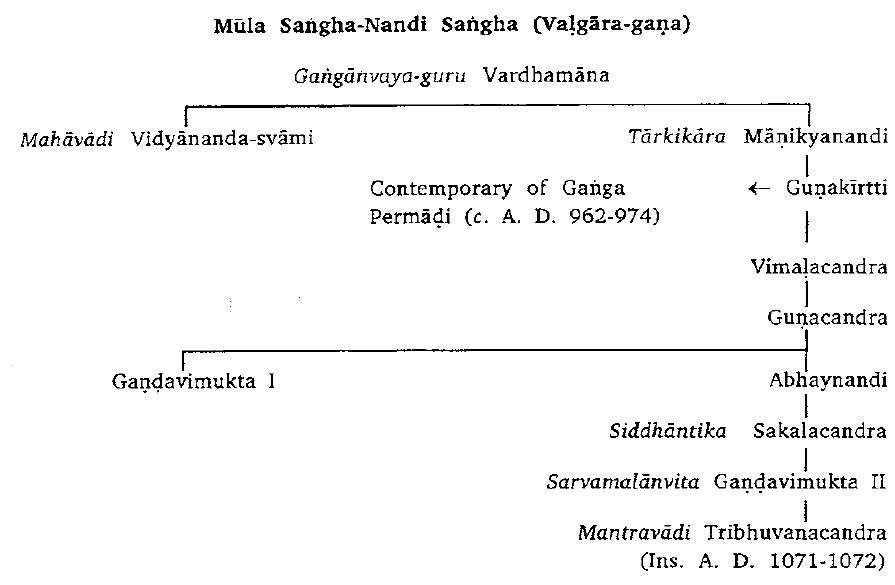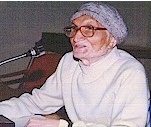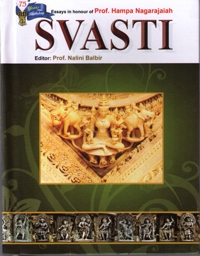7
The Date of Vidyānanda
Literary and Epigraphical Evidence
Vidyānanda and Māṇikyanandi (the latter of the Parīkṣāmukha fame), the pontiffs of the Southern Church, along with Siddharṣi (active c. AD 890-920)[1] of the Northern Church, belong to the last batch of the great epistemologists within the ambit of the Br̥had-Nirgrantha tradition. Vidyānanda’s known works, some of which are famous, are the Tattvārtha-śloka-vārttika,[2] the Aṣṭasahasrī,[3] the Yuktyanuśāsanālaṅkāra,[4] the Vidyānanda-mahodaya,[5] the Āpta-parīkṣā,[6] the Pramāṇa-parīkṣā,[7] the Pātra-parīkṣā,[8] the Satyaśāsana-parīkṣā,[9] and the Śrīpura-Pārśvanātha-stotra.[10]
The writers of this century for long had been placing him between the last quarter of the eighth and the first quarter of the ninth century A.D. and thus to the pre-medieval times. While late K.B. Pathak is one of the earliest to situate him in c. A.D. 816, but without producing much supporting evidence, it was Darbarilal Kothiya who collected much of the vital evidence which had bearing on the issue and presented it in his “Introduction” in Hindi to Vidyānanda’s Āpta-parīkṣā where he almost convincingly fixed his date to c. A.D. 775-840.[11] Kothiya’s main points (which incidentally include, according to his method of investigation, an observation that Vidyānanda did not anywhere refute Vācaspati Miśra, the famous mid-ninth century scholiast and commentator of the works belonging to various darśanas) was summarized by Gokul Chandra Jain in his “Introduction” in Hindi to the Satyaśāsan[a]-parīkṣā, pp. 29-31. Nathmal Tatia, in his prefatory paper, “A compendium of Vidyānanda’s Satyaśāsana-parīkṣā,” to the Satyaśāsan[a]-parīkṣā edited by Jain, however, had pointed out that in this work Vidyānanda had quoted an inaugural verse from the Bhāmatī-ṭīkā on the Nyāya-Vārttika of Udyotakara (c. 6th - 7th cent. A.D) as cited by Vācaspati Miśra.[12] Seemingly, based on the indicator in Tatia’s preface, Jain, in his afore mentioned “Introduction”, cited the relevant verse and phrase from Vidyānanda, which went against Kothiya’s assertion that Vidyānanda did not refute Vācaspati Miśra,[13] Vidyānanda, on this showing, has to be placed some time after A.D. 850. Since the style of writing of Vidyānanda (as of Siddharṣi’s) and also the phrasing, choice of words, as well as approach betray the colour and flavor of medievalism, further doubts arise about his so far conceded early date.
In point of fact, the suspicion is well-founded as will now be shown. For determining Vidyānanda’s more precise date, a reengraved copy in c. mid-12th century of an earlier inscription of Ś.S. 993/A.D. 1071-1072 from Gāvarvāḍ (medieval Gāvarivāḍa) in Karnataka,[14] is very helpful. In this inscription, the donee is a Digambara Jaina divine Tribhuvanacandra whose hagiological history is given, and therein Vidyānanda finds mention as a confrere of Māṇikyanandi.
The inscription gives one information which is crucial in determining Vidyānanda’s date. It states that Gaṅga Permāḍi (Satyavākya Permānaḍi alias Mārasimha II (who is not the Gaṅga prince Satyavākya Rācamalla II), founded a Jaina temple at Aṇṇigere (Annigeri) in memory of his father Gaṅga Būtuga II[15] (and he is not Būtuga I as Kothiya had determined or surmised, or may be he had depended on some other earlier scholar’s determination) and handed it over to Guṇakīrtti, the disciple of Māṇikyanandi; and Māṇikyanandi is mentioned there as a confrere, possibly senior, of Vidyānanda. The known dates of Gaṅga Permāḍi, according to the available inscriptions, fall between c. A.D. 962 and 974. The Aṇṇigere temple, therefore, may have been founded and made over to Guṇakīrtti during those years (or if the temple was built by Būtuga II, it can then be between 940-1060, probably mid-10th century). Assuming that Guṇakīrtti’s guru Māṇikyanandi by that date was not alive and Guṇakīrtti himself was fairly advanced in age, the date of Māṇikyanandi, and hence of Vidyānanda, broadly can be bracketed between A.D. 900-950 or about 100-125 years posterior to what had been surmised by Kothiya and the writers befor and after him.[16] In this connection, Barnett’s remarks are worth noting.
“One is tempted to identify this pair of scholars with the famous Vidyānanda-Pātrakesari and the latter’s disciple Māṇikyanandi, who wrote the Parīkṣā-mukha and its commentary Prameya-chandrikā. But Mr. Pathak has shown reasons for believing that Vidyānanda-Pātrakesari is referred to in the preface of Jinasena’s Ādi-purāṇa, and that the former was an older contemporary of Māṇikyanandi, the author of Parīkṣā-mukha; and Jinasena’s latest date is Śaka 820 (J.B.B.R.S. 1892, pp. 219 ff.). Now the Māṇikyanandi of our inscription must have been living shortly before Śaka 890, since his disciple Guṇakīrtti was contemporary with the Gaṅga Permāḍi, hence the gap between the two dates cannot be bridged over.”[17]
But Jinasena’s date, as earlier surmised, is inaccurate. His Ādipurāṇa is dateable to c. A.D. 830-839. And its praśasti referred to Pātrakesari and not to Vidyānanda: For Vidyānanda and Pātrakesari, though for long confounded, were not the same persons. Pātrakesari is an earlier Digambara epistemologist who flourished some time in the seventh century as was conclusively proven by Jugal Kishor Mukhtar.[18] Also, Māṇikyanandi was not the disciple but the confrere of Vidyānanda as is clear from the Gāvarvāḍ inscription. And the temporal bracket of the concerned Gaṅga Permāḍi’s activities is c. A.D. 962-974. The epithets mahāvādī (the great dialectician) for Vidyānanda and tārkikārka (the sun among logicians) for Māṇikyanandi, as qualificatories in that inscription, leave no doubt that no other Vidyānanda and Māṇikyanandi but those two illustrious epistemologists are implied in that context. Likewise, this is the only inscription which mentions these two notable figures. Also, the pontiff Tribhuvanacandra’s claim of succession from those two illustrious pontiffs does neither seem spurious or a pretence. No attempt at appropriation of these great names by way of establishing a glorious lineage for himself can be discerned in the draft; or else, some other famous names such as Samantabhadra, Devanandi, Pātrakesari, and Akalaṅkadeva could as well have figured. The hagiology given there has all the appearance of being unambiguous and hence of indubitable genuineness. The temporal bracket of Vidyānanda, on this showing, can now firmly be ascertained to have been between A.D. 900 and 950 as noted earlier in the discussion.[19]

Siddharṣi’s most famous works are the Upamitibhavaprapañca-kathā (Sanskrit) (A.D. 905) and a commentary in Sanskrit (c. A.D. 900) on the Upadeśamālā of Sanghadāsa gaṇi (c. mid-6th cent. A.D) Recently, I have shown that the Nyāyāvatāra, a famous Dvātriṃśikā in Sanskrit on the Nirgrantha-pramāṇaśāstra, is not the work of Siddhasena Divākara (c. A.D. 400-444) as had been held by many but could be of Siddharṣi: (Cf. “The Date and Authorship of Nyāyāvatāra”, Nirgrantha 1, Ahmedabad 1996). The Śakrastava may also be addedas Siddharṣi’s work, though hitherto steadfastly, insistently, though wrongly attributed to Siddhasena Divākara.
This is a further commentary on the Southern adoption of the Tattvārthādhigama-sūtra of Umāsvāti (c. A.D. 350-373), the latter work is called Tattvārtha-sūtra in the fold of the Digambara Jaina sect. The author of the Digambara version is from early 16th century called ‘Umāsvāmī’.
This is an enlarged commentary incorporating the Aṣṭaśatī of Bhaṭṭa Akalaṅkadeva (active c. A.D. 730-780) on the Āptamīmāṃsā of Samantabhadra (c. A.D. 550-600).
Vidyānanda has referred to this work in his Tattvārtha-śloka-vārttika and in the Aṣṭasahasrī. The work till now is unavailable.
The work seemingly was inspired by the inaugural verse of the Sarvārthasiddhi-ṭīkā on the Tattvārtha-sūtra by Pūjyapāda Devanandi (active c. A.D. 635-680).
Probably inspired by Akalaṅkadeva’s Pramāṇa-Saṅgraha as well as, plausibly, some other works of a few preceding authors.
The work compares the epistemological stands of other philosophical schools with that of the Nirgrantha. Ed. Gokul Chandra Jain, JMJSGSG No. 30, Calcutta-Varanasi-Delhi 1964. The information in annotations 1-9, 11, and 12 in this article has been abstracted from Gokul Chandra’s “Introduction” in Hindi of the same work, pp. 32-34.
This is a hymn addressed to Jina Pārśva of Śrīpura. The latter place was a tīrtha in that period, situated as it probably was somewhere in Karnataka.
Jain, p. 8. There also, there is evidence inside Vidyānanda’s work. For example his citing from Sureśvara Miśra’s Sambandha-vārttika. Sureśvarācārya was the principle disciple of Śaṅkarācārya whose traditional date is A.D. 780-812. The reference to ‘Satyavākyādhipa’ in some of Vidyānanda’s works had been taken by Kothiya (and possibly earlier by Pathak) as Gaṅga Rācamalla Satyavākya, the nephew and successor of Gaṅga Śivamāra I (Jain, “Introduction,” p. 31). However, “Satyavākya” was also the title of Gaṅga Permānaḍi (Mārasimha II) (c. A.D. 963-974), son of Gaṅga Būtuga II. And it is he who is implied in the context invoked.
Cf. L.D. Barnett, “Two inscriptions from Gawarwad and Annigeri of the Reign of Someśvara II: Saka 993 and 994,” Epigraphia Indica, Vol. XV, 1919-20, pp. 337-348.
Dr. Hampa Nagarajaiah, however, in a communication, had mentioned to me that the temple was built by Būtuga I and not Būtuga II.
Cf. Mahendrakumar Jain, 2. The Authors, T. Vidyānanda: Siddhivinishchaya-tika of Shri Anantaviryacharya, the commentary on Siddhivinishchaya and its Vritti of Bhatta Akalanka Deva, Jñānapīṭha Mūrtidevī Jaina Granthamālā, SG 22, V. S. 2015 (A.D. 1959), pp. 49, 50. Pt. Jugal Kishor Mukhtar also believed Vidyānanda to be of ninth century. (Cf. “Svāmī Pātrakesari aur Vidyānanda.” Jaina Sāhitya aur Itihāsa par Viṣada Prakāśa (Hindi). Calcutta 1965, p. 652.
Vidyadhara Joharpurkar, in his “Introduction”, summarizes the content of the Gāvarvāḍa inscription but offers no comment on the implications which have a strong, in fact very vital bearing on the date of Vidyānanda as also of Māṇikyanandi. (Cf. Jaina Śilālekha Saṅgraha, MDJG No. 48, Varanasi V. N. 2491/A.D. 1964, pp. 10, 11).
 Prof. M.A. Dhaky
Prof. M.A. Dhaky
